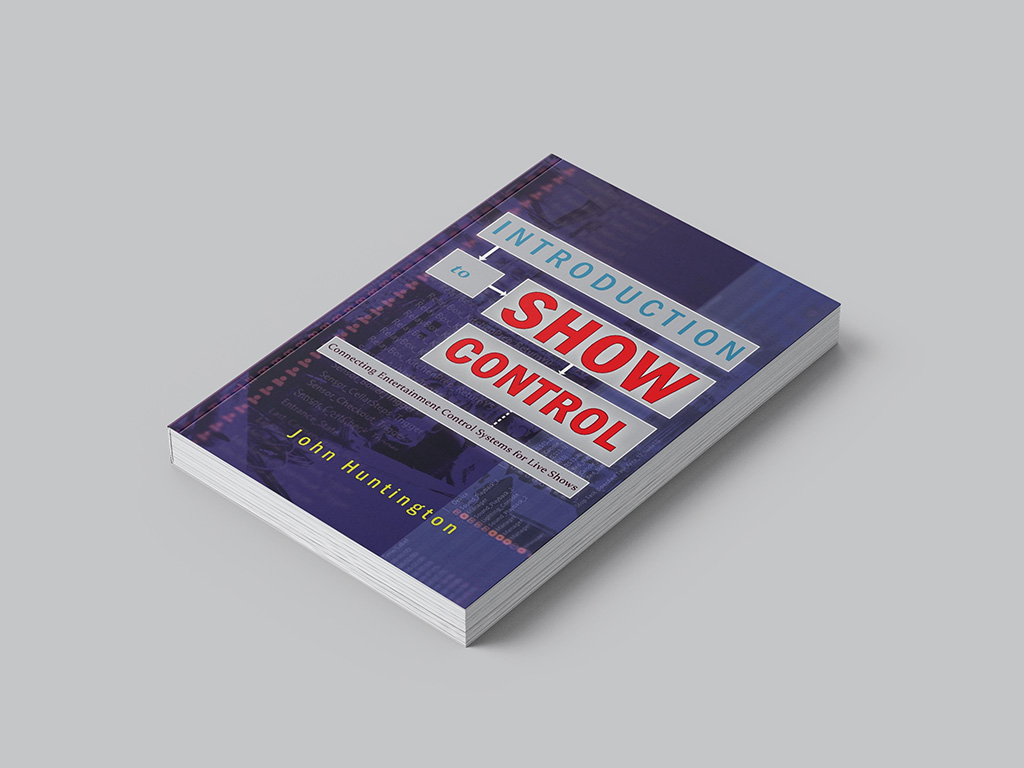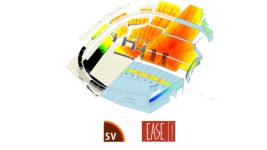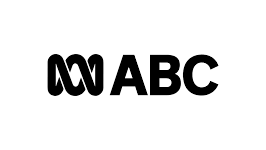REVIEW
19 Jun 2024
Show Control

Subscribe to CX E-News
by John Huntington
Introduction to Show Control – Connecting Entertainment Control Systems for Live Shows is a book dedicated to the control systems that run and manage live events. The book is designed to be read alongside Introduction to Show Networking, a companion volume written by the same author.
Introduction to Show Control is a four chapter book which goes into detail on topics such as cue concepts, protocols, synchronisation, triggers, system architectures and methods of connecting entertainment control systems together. It is tied in with practical examples from real events and installations. The book also offers a show control system design process as well as seven system design principles and their real-world applications.
What this book will give you is a fantastic primer on show control systems and protocols as well as the framework to design and spec your own control system. It will also help you to decipher other control systems and networks which will give you the ability to reverse engineer them and modify them for different purposes.
Although this book gives a good foundation, it is only a starting point. You will have to learn about the hardware and software components in the system. For example, it does not delve into the limitations of certain consoles, nodes, amplifiers, media servers, or processors.
“Show control simply means connecting two or more entertainment control systems together.”
Who is the book for?
The book is for anyone seeking a top-level understanding of how show control systems interact and behave. It would be for anyone tasked with designing and implementing control systems for a show, production, or installation. The book would be for anyone wanting to learn about system design as opposed to how to operate individual consoles or systems. Quite a narrow field, but if you are part of this small target market for this book, it will be a must read for you.
Who might benefit from reading this book?
Production managers, technical managers or anyone involved in operating an event or commissioning an install. Anybody who comes into contact with any form of control gear may benefit from reading this book. Although they may not see this book as a how-to manual, the information contained would be useful and good to know. The book is of an educational/ reference type, so you could argue anyone who considers themselves to be a student of the industry might benefit from reading it.
Who is this book not for?
Anyone who has no contact with control equipment, nor the desire to do so, will see no benefit in consuming the information contained this book.
What I liked about the book
I really appreciated the proper breakdown and explanation of Time Code (TC). It was one of the longer sections but well worth it in my opinion. As systems and control become more and more digitised and synchronised,
I think we will start seeing more reliance on protocols such as Time Code for running and synchronising shows. Chapter four was my favourite chapter. It runs us through a number of examples of show control systems and breaks them down using the author’s show control design process. The concepts are much easier to understand and comprehend when broken down into steps and then applied in real world situations.
How I think the book could have been better
I really liked the show control system design process as well as the seven system design principles. They were practical and easy to understand. It would have been good to get a template and a bit of a checklist as an appendix for those looking to take and apply the steps to their own set ups. I did end up making my own checklist based on this book and found it very useful.
About the Author
A trusted expert, John Huntington draws on more than three decades of experience in the field and classroom to clearly explain what goes on behind the scenes bringing performances to life in real-world settings. Huntington has worked on live shows, feature films, concerts, and installations with major companies and venues throughout the entertainment industry. Huntington is a professor at New York City College of Technology/CUNY (‘City Tech’).
Readability: 7/10
It is a readable book considering the subject. It was not written like a textbook (and it could have been) which I think was a good decision by the author. The first half of the book is about laying the groundwork by outlining concepts and defining terms, the second half is where it all ties together and becomes much more interesting. It’s not a book you just have a browse through or half- read. This is a book you pick up if you are specifically looking to upskill your control and networking knowledge. Although just 107 pages, it did take a few sittings to get through in order to properly digest its contents.
Supporting materials: 6/10
There was not a whole lot in the way of supporting materials. That said, they were not as important as some other books I’ve read, especially in the first half of the book. There were a few diagrams and schematics that were helpful in explaining concepts but didn’t quite tell the story on their own.
Relevance: 9/10
Extremely relevant to what we do. It was written in 2023, making it up-to-date. The book was written for our industry by an industry person. The book is not written for a very wide audience, but those it was written for would find it a great book to get an overview from as well as to learn how to design, spec and set up control networks. The fact that there are very few books written on this topic add to its relevance.
Usefulness: 9/10
I found the book to be very useful. Part of the usefulness for me is you can use it as reference material later on. It helped me now and will be of use to me later on as well. This is a book you buy yourself and keep, not just borrow and browse through. One thing I did learn from reading this book is that a lot of the concepts and protocols are not exactly brand new; many are decades old. Chances are, many topics covered here in 2023 will still hold value in 2033.
Value for money: 8/10
If this book is relevant to you (if you fit in the ‘who is this book for’ category) then this book represents excellent value for money. The way to get the best value from this book is read the authors companion book Introduction to Show Networking first. That said, I do wonder if they could have been merged into one book; it would have made it great value for money.
Total: 39/50: 4 stars
Subscribe
Published monthly since 1991, our famous AV industry magazine is free for download or pay for print. Subscribers also receive CX News, our free weekly email with the latest industry news and jobs.






